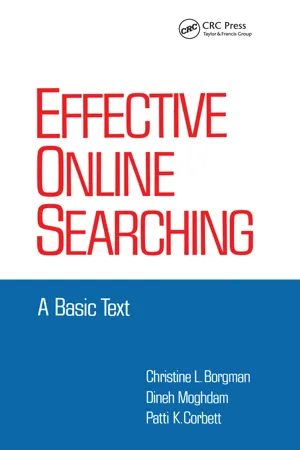Relational Databases
Relational databases are a type of database that organizes data into tables with rows and columns, allowing for efficient storage and retrieval of information. They use structured query language (SQL) to manage and manipulate data. The relational model provides a way to establish relationships between different data sets, enabling complex queries and ensuring data integrity.
6 Key excerpts on "Relational Databases"
- eBook - ePub
Data Analysis for Corporate Finance
Building financial models using SQL, Python, and MS PowerBI
- Mariano F. Scandizzo CFA CQF(Author)
- 2021(Publication Date)
- Fulton Books, Inc.(Publisher)
...For many years, SQL has been widely used as the language for database queries. Based on relational algebra, SQL provides an internally consistent mathematical language that makes it easier to improve the performance of all database queries. In comparison, other approaches must define individual queries. Benefits of Relational Databases The simple yet powerful relational model is used by organizations of all types and sizes for a broad variety of information needs. Relational Databases are used to track inventories, process e-commerce transactions, manage large amounts of mission-critical customer information, and much more. A relational database can be considered for any information need in which data points relate to each other and must be managed in a secure, rules-based, and consistent way. Relational Databases have been around since the 1970s. The advantages of the relational model continue to make it the most widely accepted model for databases. How a Database Table Is Organized The model for a relational database states that data is stored in one or more tables. It also states that each table can be viewed as a two-dimensional matrix consisting of rows and columns. This is illustrated by the relational table, which contains information about AdventureWorks resellers. Each row in this table contains information about a single reseller. Fig. 7: Table Design & Layout In general, each table is modeled after a real-world entity, in this case, the information related to the bike shops reselling AdventureWorks products. Then, the columns of the table represent the attributes of the entity, such as name, address, phone number, etc. Each row of the table represents one instance of the table...
- eBook - ePub
- David Austerberry(Author)
- 2012(Publication Date)
- Routledge(Publisher)
...Note that a relational database is one that is based on related sets of information, not on the relationships between tables. The entity relationships between tables have led to this misunderstanding. It is perfectly possible to have a database with a single table of relations with no relationships to other tables. For reasons of efficiency, a single table is usually normalized into a number of associated tables. A typical relation would be that of a commercial with a SpotName, with a unique Spot_ID stored on a tape number Tape_ID in format Tape_format and stored in a Location. The relation is made up of attributes: Tape_format, Tape_ID, etc. These attributes have a domain or datatype. For example, the Spot_ID is four-character, numeric, and can have values between 0000 and 9999. An attribute may have a limited set of values, called a domain. For example, there will be a set of shelf numbers within the vault. A record (originally called a tuple) is a statement that has attribute values that match the required attributes for that relation. Relation values are usually represented as a two-dimensional table (Figure 13.1). The attributes are represented in columns, and the tuples in rows. A collection of relational variables is called a database. This terminology is rarely used outside the field of relational modeling. Instead, more general terms are used: • Relational variable, usually represented by and called a table • Attributes, called fields and represented in columns • Attribute values are called field values • Tuples are represented by rows that are called database records • Domain refers to the datatype of a column Figure 13.1 Relational variable represented as a table The set of columns in a table is called the scheme, so the set of tables is the schema. Records stored in the table can only be identified by the values within the fields. There is no direct system for referencing cells like a spreadsheet...
- eBook - ePub
Information Systems
What Every Business Student Needs to Know, Second Edition
- Efrem G. Mallach(Author)
- 2020(Publication Date)
- CRC Press(Publisher)
...Values are usually 0 (an entity of this class is not required) or 1 (an entity of this class is required). Normalization: The process of ensuring that the design of a relational database meets rules for correct database structure, modifying its design to meet them if necessary. One-to-one relationship: A relationship between two entity classes where the maximum cardinality of both entities is 1. Operational database: A database designed to support the daily operation of an organization. Partitioned database: See fragmented database. Passphrase: Series of several words that functions like a password. Password: Sequence of characters known only to one person, used to confirm that a person is who he or she claims to be. Password management software: Application that helps users manage multiple passwords securely, making it unnecessary to memorize them or write them down. Primary key: Unique identifier of a row (record) in a relational database. Read access: Permission to read the content of a database, or part of a one, but not to modify it. Compare write access. Record: The group of fields that, together, describe a single real-world concept or object. Redundancy: Storing the same information more than once in a database. Relational database: A database in which data is stored in the form of tables, with records in different tables connected by matching a foreign key in one table with the primary key of another. Relationship: A statement of how one entity is related to another. This can include text and a statement of the cardinality of the relationship. See cardinality, minimum cardinality, maximum cardinality, one-to-one relationship, many-to-one relationship, many-to-many relationship. Replicated database: A distributed database in which copies of the entire database are on different computers. Role-based access: Database access based on a person’s job...
- Robert C. Hughes(Author)
- 2018(Publication Date)
- Chapman and Hall/CRC(Publisher)
...Later we will examine and work with Multidimensional Table Structures found today in Online Analytical Processing (OLAP) Relational Databases. RELATIONAL DATABASE MANAGEMENT SYSTEM TABLE STRUCTURES In Two-Dimensional RDMS Table Structures, Rows represent Records, and Columns represent Data Fields. As illustrated in Table 3.1, there are Five Data Fields, namely, Employee ID, Job Code, Job Title, Department ID, and Department Name. Table 3.1 is a Non-Normalized Relational Table in that a Normalized Design has not yet been deployed to eliminate duplication of certain information. The Employee ID column in Tables 3.1 and 3.2 has the (pk) notation to denote that this column serves as a Primary Key for the Table. The Primary Key ensures that no duplicate records can be inserted into the table based on an existing value for that column or combination of columns that form the Primary Key. The Database Management Systems (DBMS) automatically enforces the Primary Key by default; for example, if there was an attempt to insert another record with the Employee ID value of 129 in the Employee Table shown in Table 3.1 the transaction would automatically be rejected by the RDMS since the Primary Key has been defined as the Employee ID column. This prevents any duplicate records from being inserted in the Employee Table. Non-Key Columns can still be updated as necessary. Database Normalization In RDMSs, Database Designers for Transactional Databases strive to achieve full normalization at the third Level. The process of normalization involves designing each Table so that there is no unnecessary duplication of information across rows in the table. Non-Normalized Tables are often referred to as Flat Files since there are no related Tables present in the Database Design (Schema)...
- eBook - ePub
GIS for Planning and the Built Environment
An Introduction to Spatial Analysis
- Ed Ferrari, Alasdair Rae(Authors)
- 2019(Publication Date)
- Bloomsbury Academic(Publisher)
...We will seek to define and then extend the commonly used database metaphors that we use in our everyday digital lives: for example, the idea of ‘records’ of things organised into ‘fields’ of information. These ideas are used in GIS environments, but they are also elaborated on and extended by spatial thinking. Imagine a typical, user-managed database such as a list of contacts stored on a mobile phone. It is natural for us to think about organising our contacts using fields like ‘name’, ‘address’, ‘phone number’ and so on. With GIS we also store map objects in the same way: the geographical coordinates of a point describing that person’s address within a city, so that it can be displayed on a map. The point – the map object – is essentially another field in the contacts database. The chapter will begin first by defining some basic database concepts before turning its attention to how these concepts fit within a GIS. At this point, it is then necessary to develop the ideas of spatial data models and attributes. These are particular ways that information about things is stored within a GIS environment, and they relate to the database way of thinking about the world. They are derived, ultimately, from the techniques that computer scientists created in the earliest computers for storing and retrieving data, but they are still relevant to us now. The second substantive section of the chapter does that. Finally, the chapter shows how the database way of thinking works practi-cally within common GIS applications and in performing basic GIS tasks. For example, we demonstrate the role of the underlying ‘database architecture’ in facilitating ‘joins’ between different datasets and the dynamic links between map views and tabular views of the same dataset. The importance of structured data Most computer applications rely on the imposition of highly structured schemas in order to be able to work with user-generated data...
- eBook - ePub
Effective Online Searching
A Basic Text
- Christine L. Borgman, Dineh Moghdam, Patti K. Corbett(Authors)
- 2021(Publication Date)
- CRC Press(Publisher)
...6 Databases A thorough knowledge of the structure and content of a database is basic to the training of a search analyst. Yet, it would be impossible to do justice to the topic as a whole without placing stringent limits on the scope of the discussion. Thus, the following points are covered only to the extent that they affect the ability of the search intermediary to conduct an online bibliographic search: the origin of databases and the structure of the industry; types of databases and their relationship with printed indexes; selecting the appropriate databases; the internal makeup and structure of a typical database, including elements of standardization; the relationship between databases and information retrieval systems; and finally, where to turn for more information on a given database. As mentioned in Chapter 1, a database refers to any organized collection of related computer-readable data. In this particular case, emphasis is entirely upon those databases which are searchable through the large, multi-database, commercial information retrieval systems. However, one should not lose sight of the fact that information contained in many such databases has previously been available in a printed format, namely the index. A collection of databases, such as those offered by a search system vendor, is sometimes referred to as a "databank." In a library context, most electronic databases are based on an equivalent printed index but offer greater flexibility and sophistication in the searching process. Computer capabilities can be utilized to take advantage of multiple access points to each entry, and logical relationships can be required among entries to refine a query further. ORIGIN OF DATABASES Although the capability of producing electronic databases coincided with the production of the first computer, the practicality of the venture depended upon the ability to search large volumes of data at a low cost per search...





